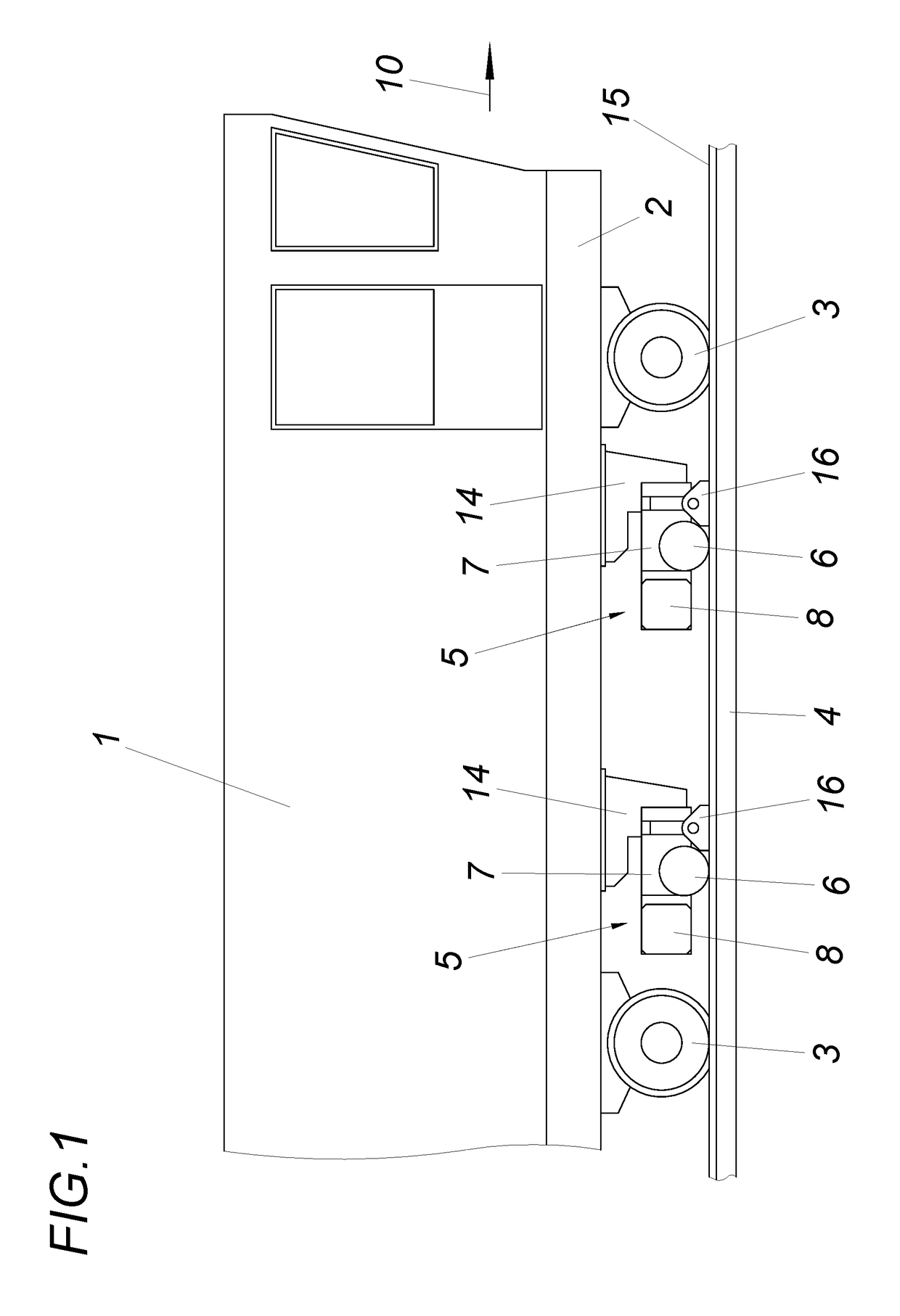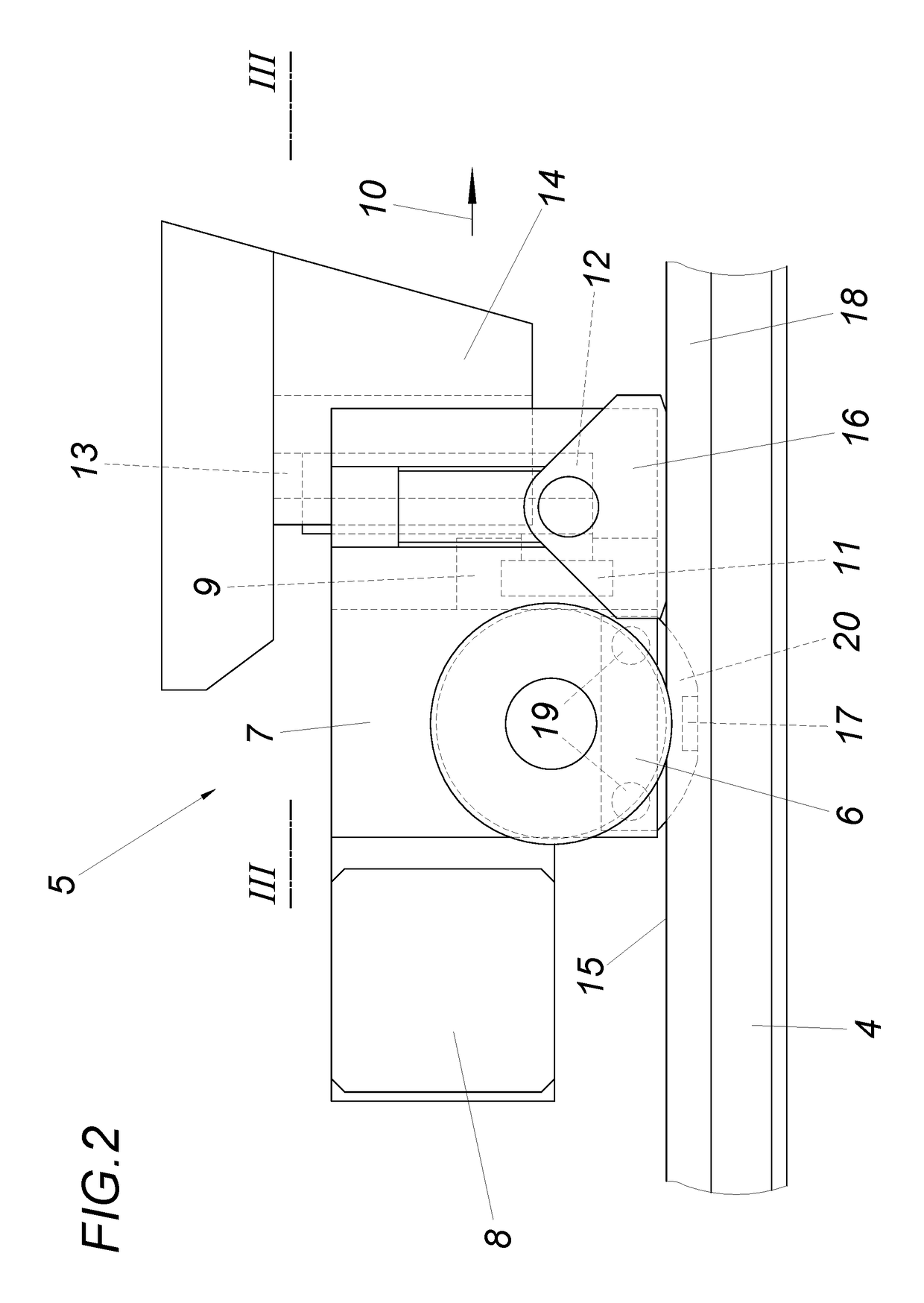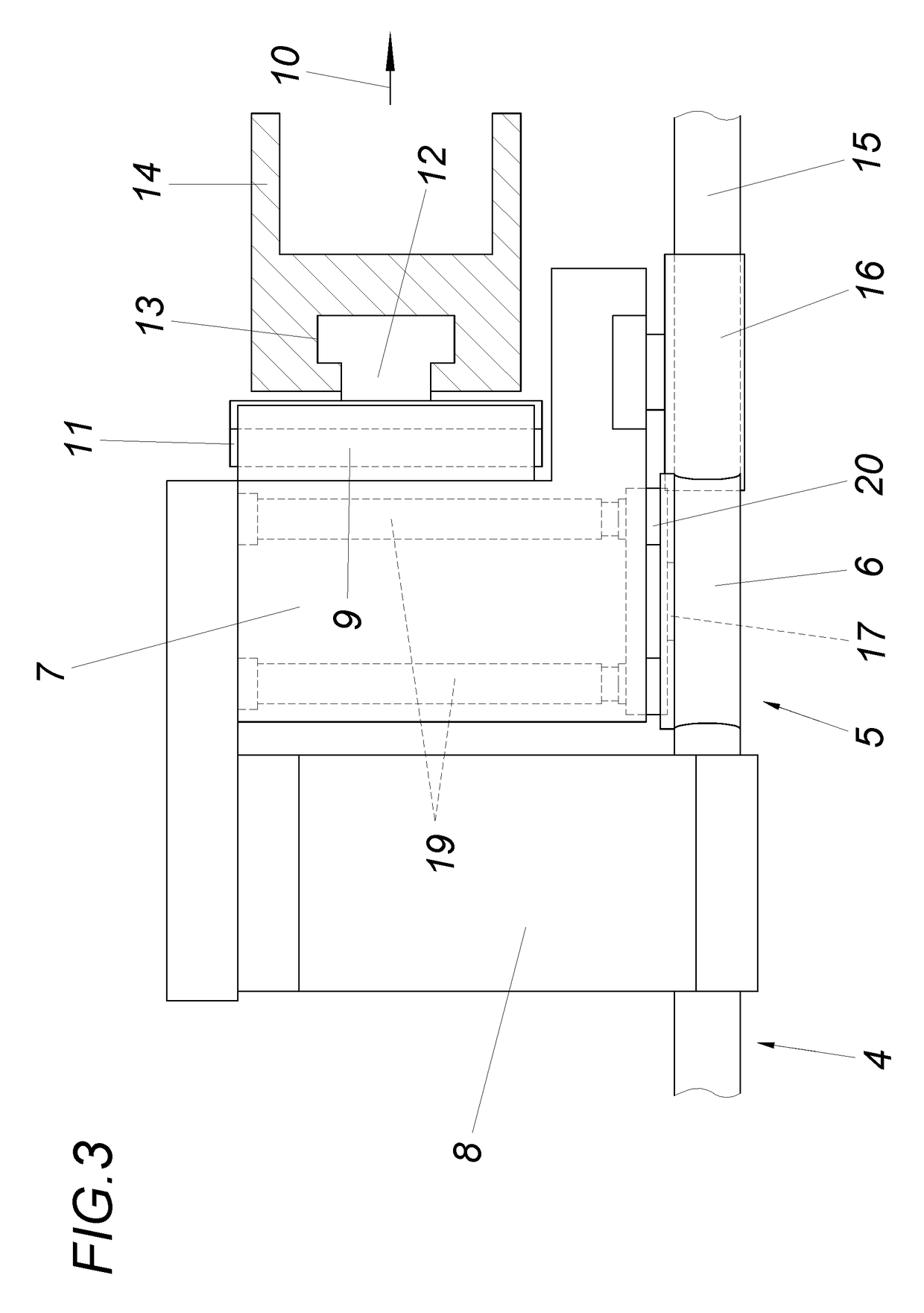Rail vehicle having a device for finishing the running surface of track rails
a technology for finishing the running surface and track rails, which is applied to railway tracks, carriages, milling equipment, etc., can solve the problems of substantial difficulty in machine track rails having small curve radii
- Summary
- Abstract
- Description
- Claims
- Application Information
AI Technical Summary
Benefits of technology
Problems solved by technology
Method used
Image
Examples
Embodiment Construction
[0018]The rail vehicle 1 has, according to FIG. 1, a chassis frame 2 having wheel sets 3, which roll on track rails 4. Two corresponding milling devices 5 for the track rails 4 are arranged between each of the wheel sets 3 below the linear continuous chassis frame 2. The milling devices 5 have a milling head 6, which is mounted in a milling head receptacle 7 and is driven in a way known per se via a motor 8. The milling head receptacle 7 forms, according to FIGS. 2 and 3, a transverse carriage 9, which is guided in parallel to the milling head shaft in a guide path 11, which is upstream from the milling head receptacle 7 with respect to the travel direction 10. The guide path 11 for the transverse carriage 9, which is opposite to the motor 8 for the milling head drive with respect to the milling head receptacle, is displaceable vertically via a feed carriage 12, which is held so the feed carriage 12 is displaceable in a guide 13 of a framework 14. The positioning drives for the tran...
PUM
| Property | Measurement | Unit |
|---|---|---|
| diameter | aaaaa | aaaaa |
| height | aaaaa | aaaaa |
| curve radii | aaaaa | aaaaa |
Abstract
Description
Claims
Application Information
 Login to View More
Login to View More - R&D
- Intellectual Property
- Life Sciences
- Materials
- Tech Scout
- Unparalleled Data Quality
- Higher Quality Content
- 60% Fewer Hallucinations
Browse by: Latest US Patents, China's latest patents, Technical Efficacy Thesaurus, Application Domain, Technology Topic, Popular Technical Reports.
© 2025 PatSnap. All rights reserved.Legal|Privacy policy|Modern Slavery Act Transparency Statement|Sitemap|About US| Contact US: help@patsnap.com



